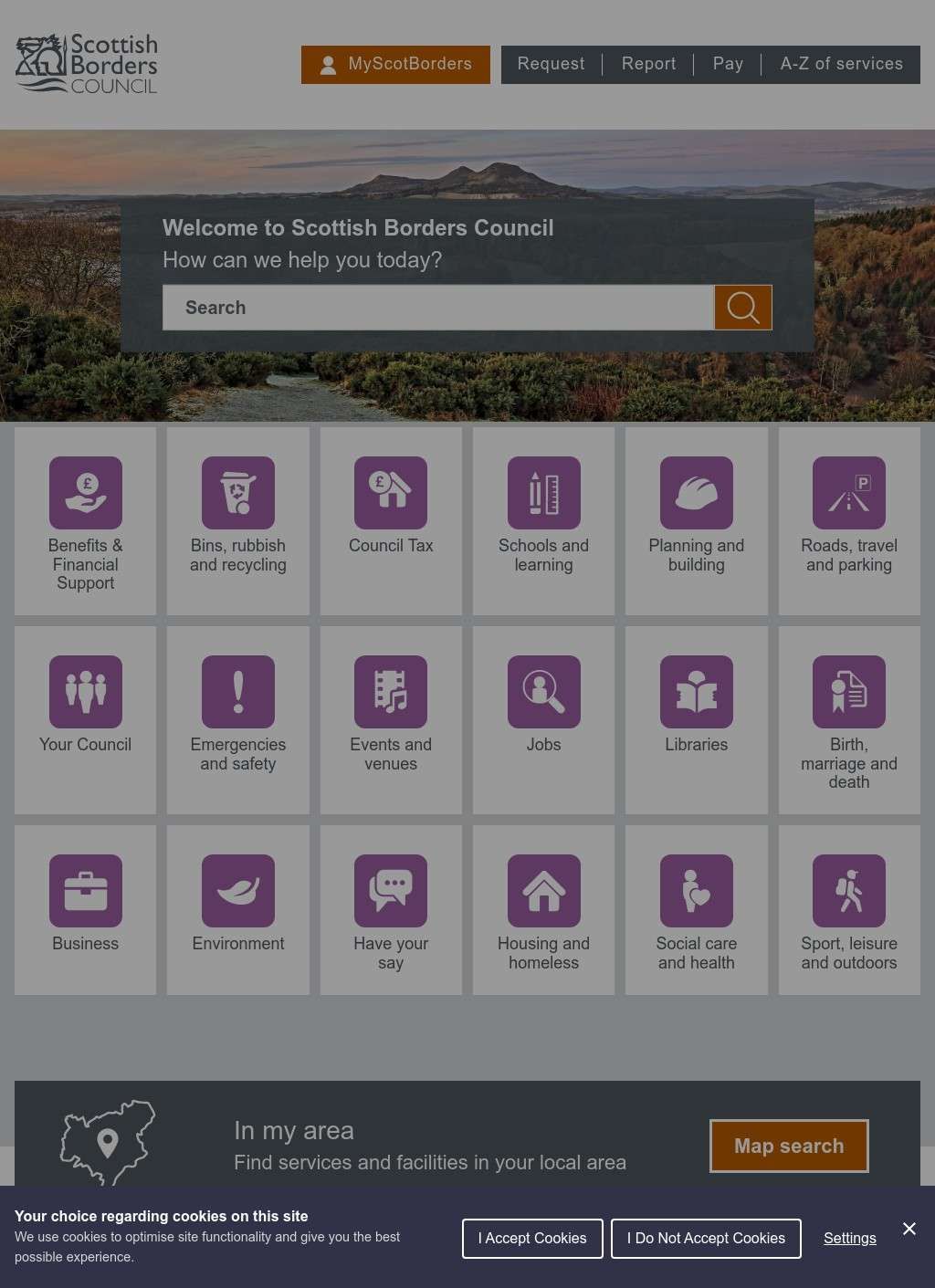Scottish Borders Council stands as the principal local government authority for Berwickshire and the wider Scottish Borders region, operating from its headquarters at Newtown Street in the historic market town of Melrose. The council serves a population of over 115,000 residents across a predominantly rural area that encompasses 1,827 square miles, making it one of Scotland's largest local authority areas by geography. Since its formation in 1996 following the merger of four district councils including the former Berwickshire District Council, this unitary authority has maintained a steadfast commitment to delivering public services across one of Scotland's most diverse and geographically challenging regions.
The council's service portfolio spans an extensive range of responsibilities that touch nearly every aspect of daily life for Berwickshire residents. Education services include the management of over 60 primary schools and nine secondary schools, with Berwickshire High School in Duns serving as the area's principal secondary education facility. Social work services provide vital support for vulnerable children, adults, and elderly residents through integrated care teams based in locality offices throughout the region. The council also maintains responsibility for housing services, managing council properties and working with housing associations to address local accommodation needs in both urban centres and rural communities.
Infrastructure and environmental services form another crucial component of the council's operations. The roads and transport department maintains over 1,800 miles of roads, from major trunk routes to minor rural lanes that serve isolated farms and communities. Waste management services operate weekly collections across the region, with recycling centres in key towns including Duns providing facilities for responsible disposal of household waste. Planning services process applications ranging from small domestic extensions to major commercial developments, balancing economic growth with the preservation of the Borders' distinctive landscape and heritage.
Democratic representation lies at the heart of the council's structure, with 34 elected councillors representing 11 multi-member wards across the region. Berwickshire's interests are represented through three wards: East Berwickshire, Mid Berwickshire, and parts of neighbouring wards. Regular council meetings, held at headquarters and streamed online, ensure transparency in decision-making processes. The Berwickshire Area Partnership provides an additional forum for local engagement, meeting quarterly to discuss community priorities and allocate funding for local projects.
Digital services have become increasingly central to the council's service delivery model. The council website serves as a comprehensive portal where residents can pay council tax, report issues, apply for licenses, and access information about local services. The 'My Scottish Borders' app allows citizens to report problems such as potholes or broken streetlights directly from their smartphones. Customer service centres in major towns, including one in Duns, provide face-to-face support for those who prefer personal interaction or lack digital access.
Economic development initiatives represent a key strategic priority for the council, particularly relevant for rural areas like Berwickshire. The council works closely with South of Scotland Enterprise to support local businesses, attract investment, and develop tourism infrastructure. Grant schemes assist small businesses and community enterprises, while the council's procurement policies prioritise local suppliers where possible. Tourism promotion focuses on the region's rich history, stunning landscapes, and cultural attractions, with initiatives like the Jim Clark Trail helping to boost visitor numbers to Berwickshire.
Community resilience and emergency planning have gained prominence in recent years, with the council coordinating responses to flooding, severe weather, and other emergencies. The Resilient Communities initiative supports local groups in developing their own emergency plans and resources. During the COVID-19 pandemic, the council demonstrated its adaptability by rapidly establishing support systems for vulnerable residents and businesses. This experience has strengthened partnerships with community groups and voluntary organisations across Berwickshire.
Financial stewardship remains a constant challenge for the council, which must balance limited resources against diverse service demands across a large, sparsely populated area. The annual budget process involves extensive consultation with communities to identify priorities and potential savings. Council tax, supplemented by Scottish Government grants, provides the primary funding sources. The council publishes detailed financial reports and performance indicators, maintaining transparency about how public money is spent and the outcomes achieved.
Looking ahead, the council faces both opportunities and challenges in serving Berwickshire's communities. Climate change mitigation, digital connectivity improvements, and demographic shifts all require strategic responses. The council's commitment to partnership working, whether with neighbouring authorities, community groups, or national agencies, positions it to address these complex issues. Regular reviews of service delivery models ensure the council continues to evolve in response to changing needs and expectations.
Contact with the council is facilitated through multiple channels to ensure accessibility for all residents. The main telephone line (0300 100 1800) operates during office hours, with emergency numbers available for urgent issues outside these times. Email enquiries can be directed to enquiries@scotborders.gov.uk, while the postal address remains Council Headquarters, Newtown St Boswells, Melrose, TD6 0SA. Social media platforms provide additional communication channels, with the council maintaining active presences on Facebook and Twitter to share news and engage with residents.
